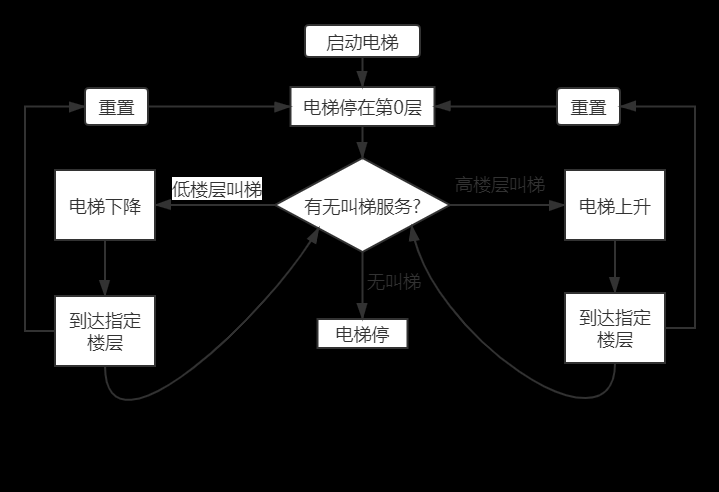1 integrationFC设计
LeNet-5网络结构全连接部分如图所示,该部分有2个全连接层,1个TanH激活层,1个SoftMax激活层:

图片来自附带的技术文档《Hardware Documentation》
integrationFC部分原理图,如图所示,图中W1和W2分别是存储全连接层FC1和全连接层FC2的权重:

全连接层FC1输入神经元个数为3840/32=120个,输出神经元个数为2688/32=84个,原理图如图所示:

Tanh激活层的输入输出位宽均为32位,原理图如图所示:

全连接层FC2输入神经元个数为2688/32=84个,输出神经元个数为320/32=10个,原理图如图所示:

SMax激活层的输入输出位宽均为32位,原理图如图所示:

2 integrationFC程序
创建UsingTheTanh文件:

输入文件名:

双击打开,输入代码:
module UsingTheTanh(x,clk,Output,resetExternal,FinishedTanh);
parameter DATA_WIDTH=32;
parameter nofinputs=784;// deterimining the no of inputs entering the function
input resetExternal;// controlling this layer
input signed [nofinputs*DATA_WIDTH-1:0] x;
input clk;
output reg FinishedTanh;
reg reset;// for the inner tanh
output reg [nofinputs*DATA_WIDTH-1:0]Output;
wire [DATA_WIDTH-1:0]OutputTemp;
reg [7:0]counter=0;
wire Finished;
reg [7:0]i;
// the inner tanh taking inputs in 32 bits and then increment using the i operator
HyperBolicTangent TanhArray (x[DATA_WIDTH*i+:DATA_WIDTH],reset,clk,OutputTemp,Finished);
always@(posedge clk)
begin
// if the external reset =1 then make everything to 0
if(resetExternal==1) begin reset=1;i=0;FinishedTanh=0; end
//checking if the tanh is not finished so continue your operation and low down the reset to continue
else if(FinishedTanh==0) begin
if(reset==1)begin reset=0; end
// if it is finished then store the output of the tanh and increment the input forward
else if (Finished==1)begin Output[DATA_WIDTH*i+:DATA_WIDTH]=OutputTemp;reset=1;i=i+1;end
// check if all the inputs are finished then the layer is OK
if(i==nofinputs)
begin FinishedTanh=1;end
end
end
endmodule
如图所示:

创建HyperBolicTangent文件:

双击打开,输入代码:
module HyperBolicTangent (x,reset,clk,OutputFinal,Finished);
parameter DATA_WIDTH=32;
localparam taylor_iter=4;//I chose 5 Taylor Coefficients to undergo my tanh operation
input signed [DATA_WIDTH-1:0] x;
input clk;
input reset;
output reg Finished;
output reg[DATA_WIDTH-1:0] OutputFinal;
reg [DATA_WIDTH*taylor_iter-1:0] Coefficients ; //-17/315 2/15 -1/3 1
wire [DATA_WIDTH-1:0] Xsquared; //To always generate a squared version of the input to increment the power by 2 always.
reg [DATA_WIDTH-1:0] ForXSqOrOne; //For Multiplying The power of X(1 or X^2)
reg [DATA_WIDTH-1:0] ForMultPrevious; //output of the first multiplication which is either with 1 or x(X or Output1)
wire [DATA_WIDTH-1:0] OutputOne; //the output of Mulitplying the X term with its corresponding power coeff.
wire [DATA_WIDTH-1:0] OutOfCoeffMult; //the output of Mulitplying the X term with its corresponding power coeff.
reg [DATA_WIDTH-1:0] OutputAdditionInAlways;
wire [DATA_WIDTH-1:0] OutputAddition; //the output of the Addition each cycle
floatMult MSquaring (x,x,Xsquared);//Generating x^2
floatMult MGeneratingXterm (ForXSqOrOne,ForMultPrevious,OutputOne); //Generating the X term [x,x^3,x^5,...]
floatMult MTheCoefficientTerm (OutputOne,Coefficients[DATA_WIDTH-1:0],OutOfCoeffMult); //Multiplying the X term by its corresponding coeff.
floatAdd FADD1 (OutOfCoeffMult,OutputAdditionInAlways,OutputAddition); //Adding the new term to the previous one ex: x-1/3*(x^3)
reg [DATA_WIDTH-1:0] AbsFloat; //To generate an absolute value of the input[For Checking the convergence]
always @ (posedge clk) begin
AbsFloat=x;//Here i hold the input then i make it positive whatever its sign to be able to compare to implement the rule |x|>pi/2 which is the convergence rule
AbsFloat[31]=0;
if(AbsFloat>32'sb00111111110010001111010111000011)begin
//The Finished bit is for letting the bigger module know that the tanh is finished
if (x[31]==0)begin
OutputFinal= 32'b00111111100000000000000000000000;Finished =1'b 1;//here i assign it an immediate value of Positive Floating one
end
if (x[31]==1)begin
OutputFinal= 32'b10111111100000000000000000000000;Finished =1'b 1;//here i assign it an immediate value of Negative Floating one
end
end
//here i handle the case of it equals +- pi/2 so i got the exact value and handle it also immediately
else if (AbsFloat==32'sb00111111110010001111010111000011)
begin
if (x[31]==0)begin
OutputFinal=32'b00111111110010001111010111000011;Finished=1'b 1;
end
else begin
OutputFinal=32'b10111111110010001111010111000011;Finished=1'b 1;
end
end
else begin
//First instance of the tanh
if(reset==1'b1)begin
Coefficients=128'b10111101010111010000110111010001_00111110000010001000100010001001_10111110101010101010101010101011_00111111100000000000000000000000;//the 4 coefficients of taylor expansion
ForXSqOrOne=32'b00111111100000000000000000000000; //initially 1
OutputAdditionInAlways=32'b00000000000000000000000000000000; //initially 0
ForMultPrevious=x;
Finished=0;
end
else begin
ForXSqOrOne=Xsquared;
ForMultPrevious=OutputOne; //get the output of the second multiplication to multiply with x
Coefficients=Coefficients>>32; //shift 32 bit to divide the out_m1 with the new number to compute the factorial
OutputAdditionInAlways=OutputAddition;
Finished=0;
end
// the end of the tanh
if(Coefficients==128'b00000000000000000000000000000000_00000000000000000000000000000000_00000000000000000000000000000000_00000000000000000000000000000000)begin
OutputFinal=OutputAddition;
Finished =1'b 1;
end
end
end
endmodule
如图所示:

双击打开integrationFC,修改代码如下:
module integrationFC (clk,reset,iFCinput,CNNoutput);
parameter DATA_WIDTH = 32;
parameter IntIn = 120;
parameter FC_1_out = 84;
parameter FC_2_out = 10;
input clk, reset;
input [IntIn*DATA_WIDTH-1:0] iFCinput;
output [FC_2_out*DATA_WIDTH-1:0] CNNoutput;
wire [FC_1_out*DATA_WIDTH-1:0] fc1Out;
wire [FC_1_out*DATA_WIDTH-1:0] fc1OutTanh;
wire [FC_2_out*DATA_WIDTH-1:0] fc2Out;
wire [FC_2_out*DATA_WIDTH-1:0] fc2OutSMax;
wire [DATA_WIDTH*FC_1_out-1:0] wFC1;
wire [DATA_WIDTH*FC_2_out-1:0] wFC2;
reg FC1reset;
reg FC2reset;
reg TanhReset;
wire TanhFlag;
reg SMaxEnable;
wire DoneFlag;
integer counter;
reg [7:0] address1;
reg [7:0] address2;
weightMemory
#(.INPUT_NODES(IntIn),
.OUTPUT_NODES(FC_1_out),
.file("E:/FPGA_Learn/FPGA/Day1211/Weight/weightsdense_1_IEEE.txt"))
W1(
.clk(clk),
.address(address1),
.weights(wFC1)
);
weightMemory
#(.INPUT_NODES(FC_1_out),
.OUTPUT_NODES(FC_2_out),
.file("E:/FPGA_Learn/FPGA/Day1211/Weight/weightsdense_2_IEEE.txt"))
W2(
.clk(clk),
.address(address2),
.weights(wFC2)
);
layer
#(.INPUT_NODES(IntIn),
.OUTPUT_NODES(FC_1_out))
FC1(
.clk(clk),
.reset(FC1reset),
.input_fc(iFCinput),
.weights(wFC1),
.output_fc(fc1Out)
);
layer
#(.INPUT_NODES(FC_1_out),
.OUTPUT_NODES(FC_2_out))
FC2(
.clk(clk),
.reset(FC2reset),
.input_fc(fc1OutTanh),
.weights(wFC2),
.output_fc(fc2Out)
);
UsingTheTanh
#(.nofinputs(FC_1_out))
Tanh1(
.x(fc1Out),
.clk(clk),
.Output(fc1OutTanh),
.resetExternal(TanhReset),
.FinishedTanh(TanhFlag)
);
softmax SMax(
.inputs(fc2Out),
.clk(clk),
.enable(SMaxEnable),
.outputs(CNNoutput),
.ackSoft(DoneFlag)
);
always @(posedge clk or posedge reset) begin
if (reset == 1'b1) begin
FC1reset = 1'b1;
FC2reset = 1'b1;
TanhReset = 1'b1;
SMaxEnable = 1'b0;
counter = 0;
address1 = -1;
address2 = -1;
end
else begin
counter = counter + 1;
if (counter > 0 && counter < IntIn + 10) begin
FC1reset = 1'b0;
end
else if (counter > IntIn + 10 && counter < IntIn + 12 + FC_1_out*6) begin
TanhReset = 1'b0;
address2 = -3;
end
else if (counter > IntIn + 12 + FC_1_out*6 && counter < IntIn + 12 + FC_1_out*6 + FC_1_out + 10) begin
FC2reset = 1'b0;
end
else if (counter > IntIn + 12 + FC_1_out*6 + FC_1_out + 10) begin
SMaxEnable = 1'b1;
end
if (address1 != 8'hfe) begin
address1 = address1 + 1;
end
else
address1 = 8'hfe;
address2 = address2 + 1;
end
end
endmodule
如图所示:

对设计进行分析,操作如图:

分析后的设计,Vivado自动生成原理图,如图:

对设计进行综合,操作如图:

综合完成,关闭即可:

希望本文对大家有帮助,上文若有不妥之处,欢迎指正文章来源:https://www.toymoban.com/news/detail-401042.html
分享决定高度,学习拉开差距文章来源地址https://www.toymoban.com/news/detail-401042.html
到了这里,关于一起学习用Verilog在FPGA上实现CNN----(八)integrationFC设计的文章就介绍完了。如果您还想了解更多内容,请在右上角搜索TOY模板网以前的文章或继续浏览下面的相关文章,希望大家以后多多支持TOY模板网!













